Aurelie Marrier D'Unienville / Oxfam
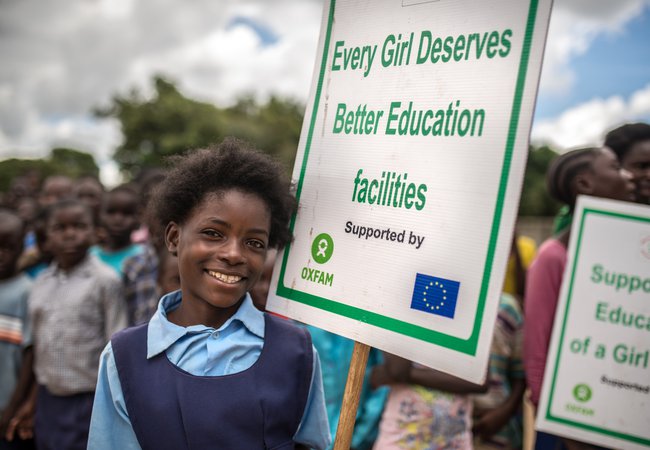
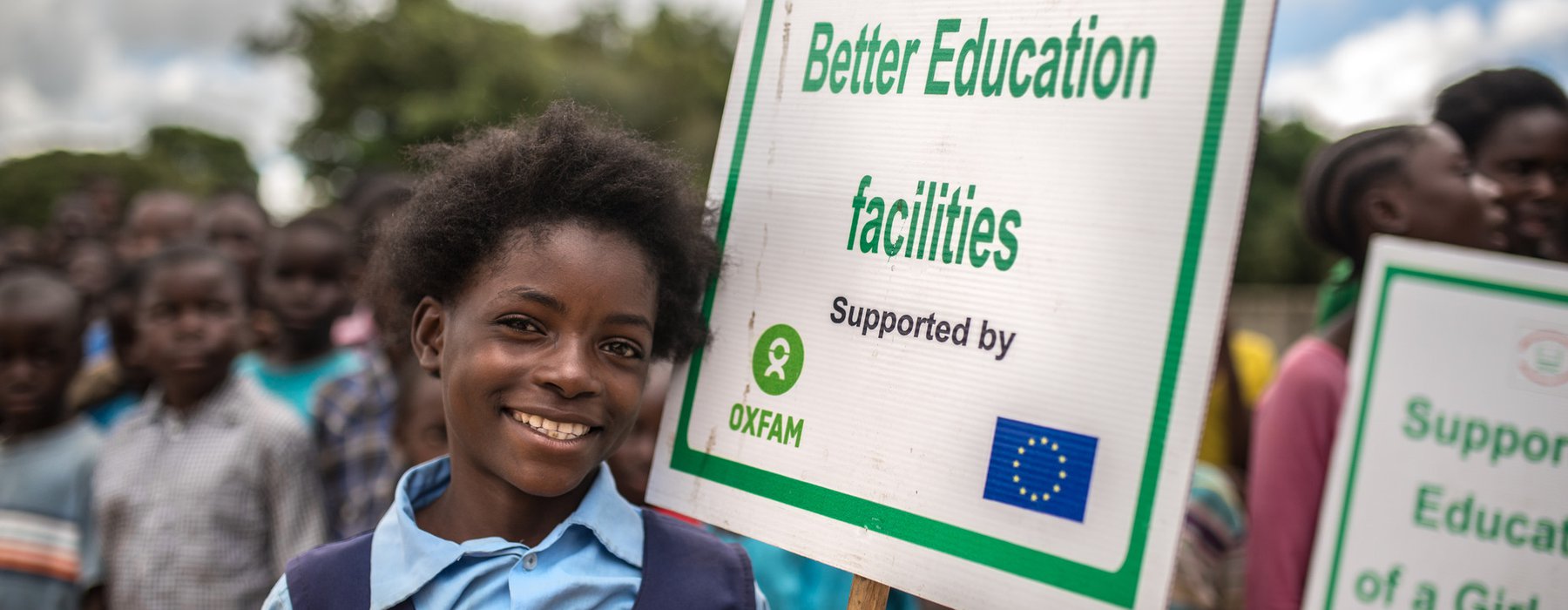
Learn about the right to education
Think about the importance of education
- What does it mean to learn?
- What would your ideal school be like?
- Here are some activities to help you to think about why education is important and a right for everyone.
Sami M. Jassar
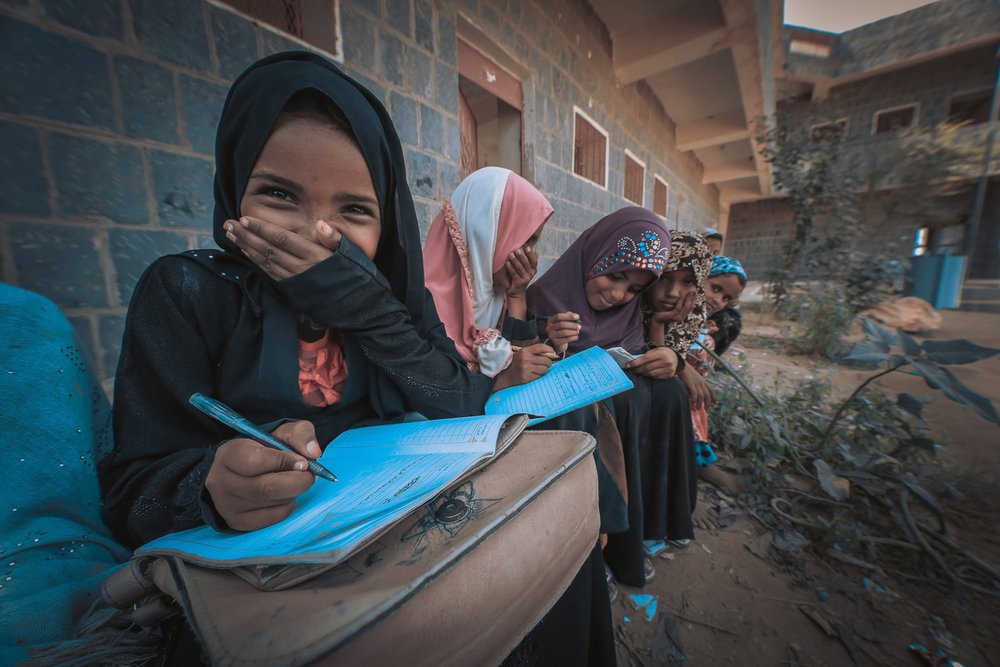
Children outside a school in Yemen. Conflict, disease and hunger make life very difficult for the Yemeni people.
- COVID-19 has affected the lives of all of us.
- In the UK, as in many countries around the world, millions of children have been experiencing what it's like not to go to school.
- But even before this pandemic started, almost 260 million children around the world were out of school.
- Children living in poverty, girls, refugees and children with disabilities - are less likely to be in school and learning.
1. Think about what it means to learn
- What does education mean to you?
- Why is learning important?
- How and where do you learn?
- If you have been learning from home, what are you looking forward to the most about going back to school?
- Perhaps you could write a poem or draw a picture to share your thoughts and ideas.
2. Explore similarities and differences
- We are all connected in so many ways.
- As human beings we all share the same basic needs such as water, food, family and friends.
- However, things such as where we live and the opportunities we have mean that we meet these needs in different ways.
Kitty Norwell/Oxfam
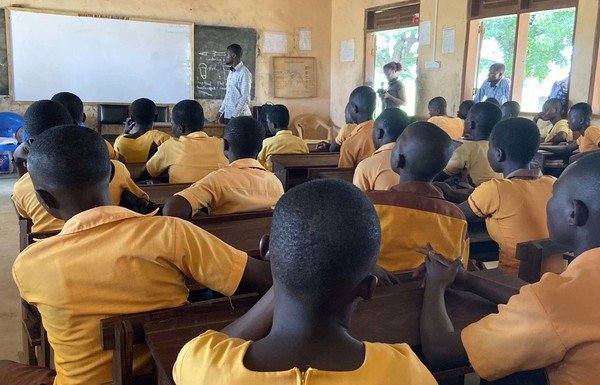
Compare a classroom in Ghana and your classroom
- Look at the photograph above which was taken in a school in northern Ghana.
- Make a list of any similarities and differences you spot between this classroom and your school.
- A similarity could be ‘these young people are wearing a school uniform, I wear a uniform at school as well’.
- A difference might be ‘this classroom looks crowded, there is more space in my classroom’.
Think and talk
- Talk about your ideas with others.
- What other similarities do you think there might be between your life and the lives of other children and young people?
- Can you think of other ways in which education and going to school might be different depending on where you live?
Explore more
- Perhaps you could look online for more photos of children and young people learning around the world and try to spot similarities and differences.
- Maybe you could hunt for images to compare different school settings in the UK such as a small primary school in the countryside and a large one in the centre of a city.
- Is there anything that you spot that you would like to see at your own school? For example, learning outside the classroom or having/not having a school uniform.
Aurélie Marrier d'Unienville/Oxfam
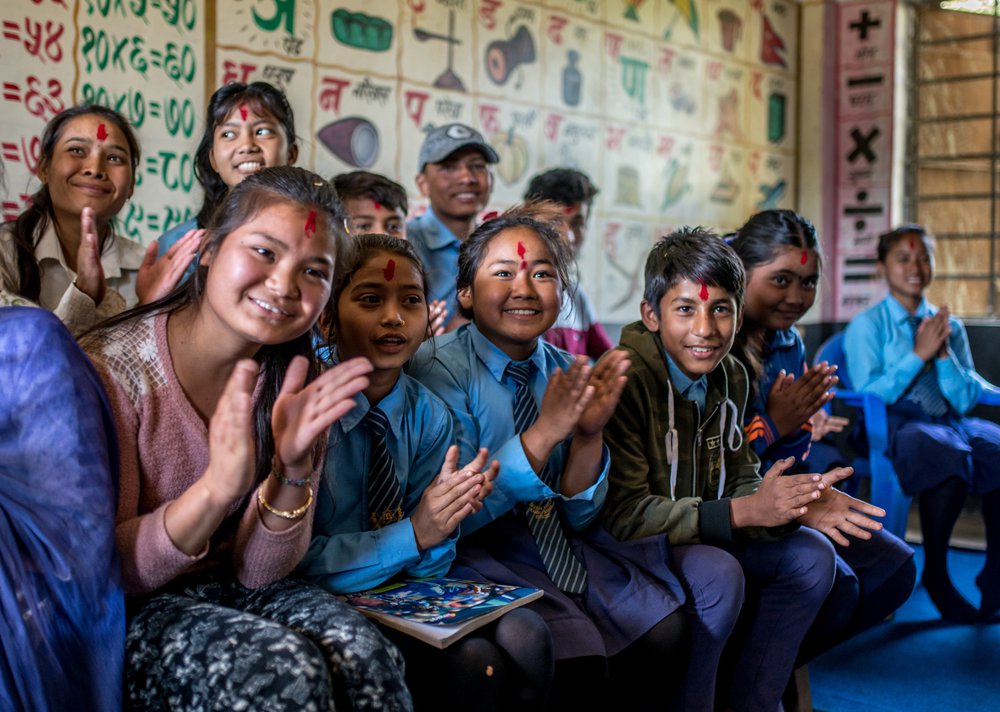
Young people at a high school in the Nepalgunj district of Nepal.
3. Design your ideal school
- Many of us have been thinking about what our lives, communities and the world might be like post lockdown and how we can build back better.
How would you like to learn?
- What you would like your school and education to be like in the future?
- Think about different things such as your classroom, the structure of the school day, what you learn and your relationships with others in your school community.
Questions to think about
- What do you like about school? What don’t you like?
- What do you think education should be for?
- What do you learn about at school? What would you like to learn more about?
- What and who helps you to learn?
- Who would you need to influence to try and make some of your suggested changes happen?
- For example, this might be the school council, governors or your headteacher.
Share your ideas
- How could you share your ideas with others?
- Maybe you could write a poem, create a piece of artwork or produce a short video.
Building your ideal school in Minecraft
Learners at Presentation College in Ireland used the online game Minecraft to recreate their school in a virtual world. The whole school community got involved in thinking about how they could work towards the Sustainable Development Goals, the set of global goals and targets aimed at making the world a better place.
4. Create an issue tree
- There are many reasons some children and young people are unable to go to school at all, as well as possible solutions.
- An issue tree is a great way to unpick a complex issue.
- You can create one on your own but it's best to make an issue tree with other people so that you can talk through your ideas together.
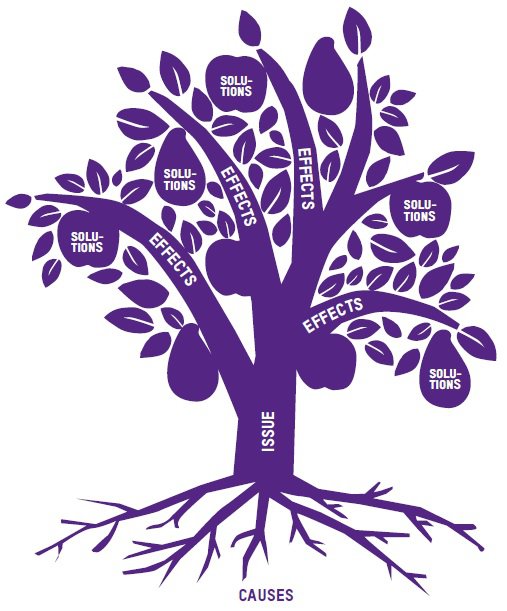
What to do
- First, draw the outline of a tree on a large piece of paper.
- Don't worry what your tree looks like as long as it has roots, a trunk, branches and some fruit.
- Write 'education' on the trunk of your tree.
- Then, think about the reasons why some children and young people may be unable to go to school at all. Write these on the roots.
- You could watch this short video from the charity UNICEF to find out what some of these barriers are.
- Now, think about what the effects of not being able to go to school at all might be. Why is going to school important to you?
- Write these possible effects on the branches of your tree.
- Finally, think about possible solutions to this issue. Write your ideas on the fruit of your tree.
- For example, one way might be to ask governments to spend more money on education. Maybe this could be used to train more teachers or provide better technology and internet access.
- There are no right or wrong answers. The aim of this activity is just to get you thinking more about this issue.
Further learning
On the Way to School
This Oxfam education resource explores the barriers that still prevent many children from going to school. Watch a short film and play a Game of Life activity. Think about why all children don’t have an equal chance of going to school.
You Know Me – who is not in school and why in the Middle East and North Africa
This short video from UNICEF shares some of the reasons why some children are not in school.